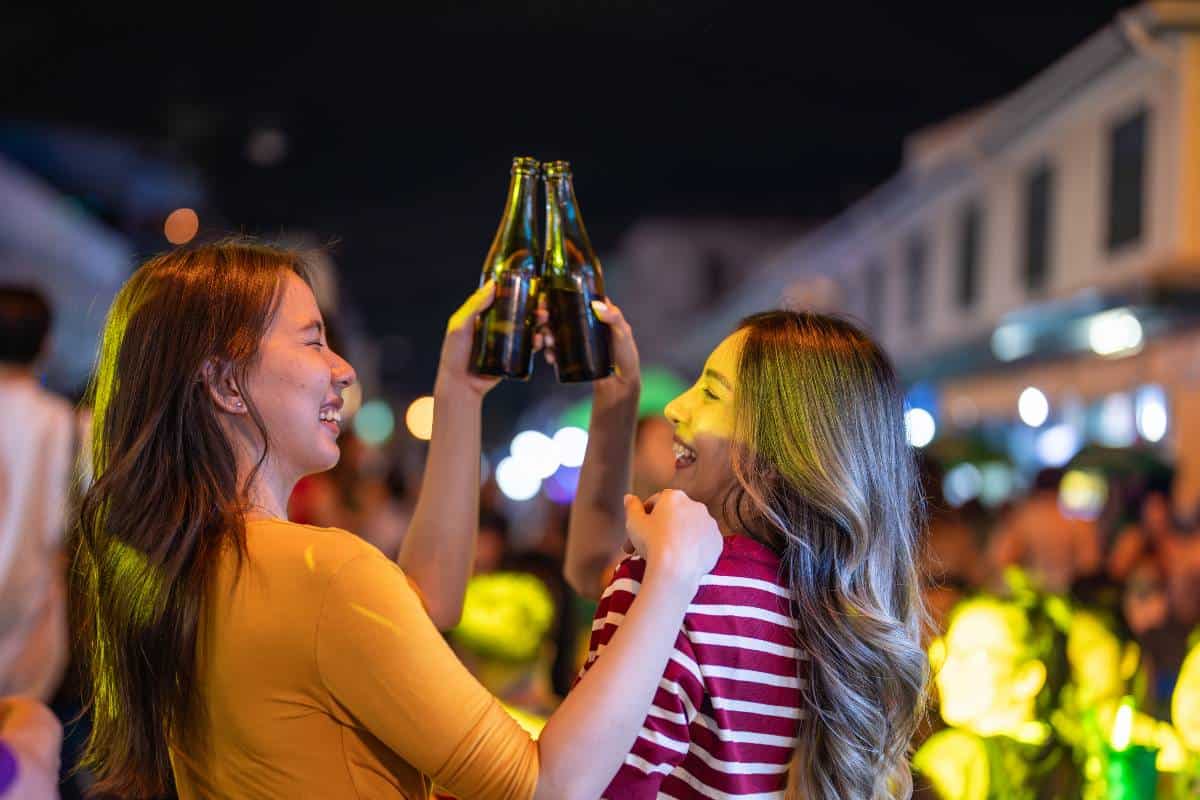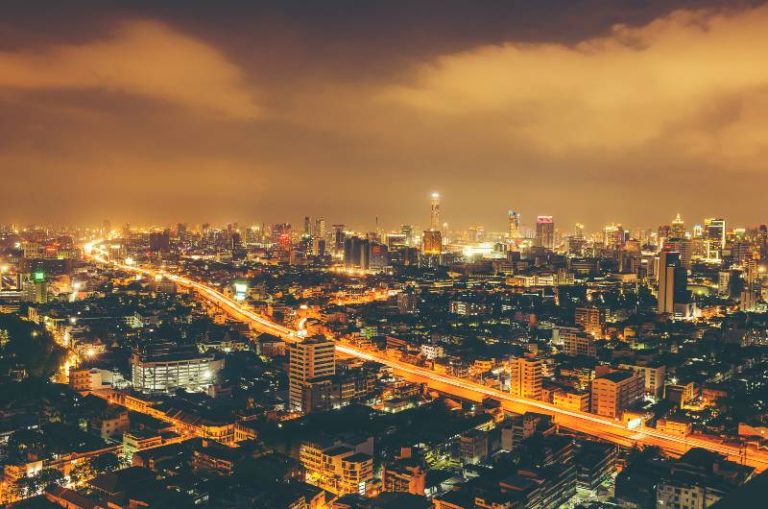Exploring Craft Beer: Navigating The Beer Scene In Thailand
When I first landed in Bangkok after 35 years in the States, I thought my beer days were behind me. Boy, was I wrong! What I discovered wasn’t just a beer scene in Thailand, but a revolution in a bottle. Despite some of the strictest brewing regulations in Southeast Asia, Thailand’s passionate beer enthusiasts have created something truly special.
From traditional lagers that have defined Thai drinking culture for decades to experimental brews hiding in plain sight across Bangkok’s neighborhoods, the beer landscape in Thailand is a fascinating mix of tradition, innovation, and creative rebellion. Let me take you on a journey through Thailand’s sudsy revolution.
Key Takeaways
- Thailand’s beer scene has evolved from being dominated by giants like Singha and Chang to embracing a vibrant craft beer movement, especially in Bangkok and other major cities.
- Until recent regulatory changes, Thai craft brewers were forced to brew abroad in countries like Vietnam and Cambodia due to strict production requirements and high capital demands.
- The best way to experience Thailand’s beer culture is through its diverse brewpubs and microbreweries, where you can taste unique flavor profiles influenced by local ingredients and traditions.
The History and Evolution of Thai Beer
Thailand’s beer story began in 1933 with the establishment of Boon Rawd Brewery by Phraya Bhirom Bhakdi (born Boon Rawd Sreshthaputra). This pivotal moment introduced Singha to the Thai market, which reigned supreme for decades as the kingdom’s premier beer.
For much of the past century, Thailand has essentially had two major brewing players: Boonrawd and Thai Bev, known for their flagship lagers: Singha and Chang respectively. Later, Leo Beer emerged as a more affordable alternative, creating the trio of mainstream beers that dominate convenience store shelves across the country.
Regulatory Landscape and Challenges
The regulatory challenges facing craft brewers in Thailand would make any American homebrewer break out in a cold sweat. The infamous 1950 Liquors Act established that beer could only be legally produced under two conditions:

- In factories with a minimum annual output of 1,000,000 liters
- In brewpubs producing at least 100,000 liters yearly for on-site consumption only
These requirements were tethered to a capital requirement of ฿10,000,000 (approximately $290,000) – effectively creating a market monopoly that kept Thailand’s beer scene stagnant for decades.
Until November 2022, smaller brewers faced nearly impossible restrictions, limited to just seven staff and a maximum production capacity of 5 horsepower. This forced many talented Thai craft brewers to take their operations abroad, brewing in neighboring countries like Vietnam, Cambodia, and Laos before importing their creations back into Thailand.
The current Alcoholic Beverage Control Act (2008) further complicates matters with strict regulations:
- Restricted sale hours: Alcohol can only be sold from 11:00-14:00 and 17:00-00:00
- Age restrictions: The minimum legal drinking age is 20 years
- Strict advertising rules: No promotion of consumption or featuring alcohol prominently
- Alcohol-free zones: No sales or consumption near schools and temples
Despite these hurdles, the creativity of Thailand’s beer community has prevailed, giving rise to one of Southeast Asia’s most dynamic underground brewing scenes.
Bangkok’s Thriving Brewpub Scene
Bangkok’s brewpub scene has flourished despite regulatory challenges, with several iconic establishments worth visiting every now and then:
The Londoner Brew Pub, established in 1997 on Sukhumvit 33 (now on Phatthanakan Road), offers a quintessential British pub experience with house-brewed craft beers and an extensive food menu. Their British-style Pilsner and well-balanced IPA have become local favorites.
Tawandang German Brewery, founded in 1999 on Rama III Road, stands as Thailand’s first microbrewery. It combines traditional German brewing techniques with Thai hospitality in a massive beer hall atmosphere. Their Lager and Dunkel (dark beer) exemplify classic German styles with a Thai twist.
In the quieter residential area off Soi Ekkamai, Mikkeller Bangkok offers an ever-changing selection of craft beers from this famous Danish microbrewery alongside Thai-exclusive brews created in collaboration with local brewers.
For the true beer geek, Hair of the Dog (with locations on Sukhumvit 33/1 and Phloen Chit) showcases experimental IPAs and sour ales you won’t find elsewhere.
Want a view with your brew? Brewski, located on the rooftop of Radisson Blu Plaza, is Bangkok’s highest craft beer bar, offering 100 craft brews and ciders on tap with breathtaking city views.
These venues aren’t just places to drink – they’re cultural hubs where beer enthusiasts gather to share their passion, debate flavor profiles, and celebrate Thailand’s evolving beer identity.
The Rise of Thai Craft Beer
Despite regulatory roadblocks, the Thai craft beer movement has gained impressive momentum in recent years. Key players like Bootleg Brothers, Chit Beer, and countless unnamed brewing collectives have pushed boundaries both in taste and legal creativity.
What makes Thai craft brewing special is the integration of local ingredients and brewing philosophies. You’ll find beers infused with:
- Tropical fruits like mangosteen and dragon fruit
- Local herbs such as lemongrass and Thai basil
- Spices like galangal and kaffir lime leaves
- Thai tea and coffee variations
Thai brewers have become masters of brewing abroad, but are thinking locally. The movement has fostered remarkable ingenuity, with many brewers developing signature styles that reflect Thailand’s culinary heritage while honoring international brewing traditions.
Newer Craft Beer Pioneers and Hidden Gems
Beyond the established brewpubs, a new generation of craft beer pioneers is reshaping Thailand’s beer landscape:
HAZEbkk (formerly Baan Bangkok)
Emerged post-COVID in Chinatown on Luang Road, offering 12 craft beer taps, live music, and sports screenings. It’s become a central hub for the local brewing community.
In Bang Khae along Kanchanaphisek Road, Brewave showcases the journey from homebrewing to legal brewing. Founded by three cousins, this spacious venue features rotating in-house brews alongside guest taps from Thai and international craft breweries.
Underdog Microbrewery
Holds the distinction of being the first microbrewery in the area of Samut Prakan, with 20 unique craft beers brewed on-site. Their Raspberry Berliner Weisse and Helles Lager exemplify their commitment to quality and innovation.
MitrBrewery
The first legal Thai craft beer brewery in Nonthaburi, Thailand. Founded by the team behind Mitr Craft, including craft beer pioneer Wichit Saiklao (better known as Chit from Koh Kret’s legendary Chit Beer), it offers 22 taps pouring a rotating selection of Thai craft beers.
UnitedPeoplesBrewery
Located in Bangkok’s Prachachuen area, UnitedPeoplesBrewery is backed by Group B Beer, Sandport, and Yod Beer. Their unique offerings, like Triple Pearl’s Galaxy Villa Pale Ale and fruited sour beers, showcase Thai brewing creativity.
These hidden gems are where true innovation happens – small-batch brewing experiments that push the boundaries of what Thai beer can be.
Regional Beer Scenes Beyond Bangkok
Thailand’s beer culture extends well beyond the capital, with distinct regional scenes developing their character:
Chiang Mai’s craft beer community has grown alongside its reputation as a digital nomad haven, with several bars dedicated to showcasing northern Thai brewing talent. The laid-back atmosphere and cooler climate make it perfect for enjoying heavier styles like stouts and porters.
In tourist hotspots like Phuket, beer options tend to cater more to international tastes, with a wider selection of imported options alongside local offerings. Beach bars often feature specialty craft bottles at premium prices.
Koh Kret, an island in the Chao Phraya River near Bangkok, has become something of a brewing pilgrimage site thanks to the legendary Chit Beer, one of the first operations to openly challenge brewing restrictions by offering homebrewing classes and tastings.
Regional preferences vary significantly, with northern Thais often preferring maltier, fuller-bodied beers, while coastal areas gravitate toward crisp, refreshing styles that combat the tropical heat.
Thai Beer Culture and Consumption Patterns
Beer drinking in Thailand is inherently social – rarely will you see someone enjoying a beer alone. Whether at street food stalls, night markets, or upscale restaurants, beer brings people together.
When it comes to Thai cuisine pairings, beer is the perfect counterpoint to spicy dishes. The effervescence and slight bitterness cut through chili heat and complement the complex flavor profiles of Thai food. Some perfect pairings include:
- Singha with Pad Thai (the crispness balances the sweetness)
- Wheat beers with Tom Yum soup (citrus notes complement the lemongrass)
- IPAs with Massaman curry (hop bitterness stands up to rich coconut)
- Stouts with grilled meats like Moo Ping (roasty notes enhance char flavors)
Beer consumption peaks during festivals like Songkran (Thai New Year) and major sporting events, with convenience stores and supermarkets seeing dramatic sales increases. Tourism has significantly influenced beer preferences, with establishments in tourist areas offering more international options and craft selections than those catering primarily to locals.
Inside a Thai Brewery: Production Process and Experience
Visiting a Thai brewery offers fascinating insights into both traditional and craft production methods. Commercial operations like Boon Rawd employ state-of-the-art German and Czech brewing equipment at a massive scale, while smaller operations often use modified systems that reflect ingenuity and resourcefulness.
The basic brewing process follows international standards, but what makes Thai brewing unique is the adaptation to tropical conditions:
- Modified temperature control systems to combat year-round heat
- Specialized filtration for local water sources
- Creative use of limited ingredients due to import costs
- Innovative fermentation approaches in challenging environments
Several breweries offer brewery tours, though these are more common at large commercial operations due to legal considerations. The beer tasting experience in Thailand often incorporates educational elements about the challenges and triumphs of brewing in Southeast Asia.
The Socioeconomic Impact of Beer in Thailand
The beer industry in Thailand extends far beyond just brewing and drinking. It contributes significantly to the economy through:
- Employment across the supply chain (from farming to distribution)
- Substantial tax revenue (alcohol taxes are among the highest in Thailand)
- Tourism attraction through beer-focused experiences
- Entrepreneurial opportunities in adjacent industries
The relationship between the government and beer production remains complex. While alcohol taxes provide essential revenue, public health concerns and Buddhist cultural influences often create tension around alcohol promotion.
Beer tourism has created new economic opportunities, particularly in urban areas where craft beer venues have revitalized previously overlooked neighborhoods. The community-building aspect shouldn’t be underestimated either – craft beer has created spaces where Thais and expatriates mix freely, sharing knowledge and culture.
FAQs
What are the three major beer brands in Thailand and how do they compare?
The three major brands are Singha (5% ABV, crisp and malty), Chang (6% ABV, stronger with a slight sweetness), and Leo (5% ABV, lighter and more refreshing). Singha is positioned as a premium brand, Chang is known for its stronger kick (sometimes called “Changover”), and Leo is typically the most affordable option.
How do Thailand’s alcohol regulations impact craft beer production?
Thailand’s strict regulations require breweries to produce at least 100,000 liters annually and have 10 million baht in capital. This has forced many craft brewers to produce abroad in countries like Cambodia and Vietnam, then import back to Thailand, significantly increasing costs and limiting growth.
Which brewpubs in Bangkok offer the best selection of locally brewed craft beers?
MitrBrewery in Nonthaburi offers 22 taps of rotating Thai craft beers, while HAZEbkk in Chinatown has become a hub for local brews. For experimental options, try Hair of the Dog (Sukhumvit 33/1) or Mikkeller Bangkok (Ekkamai), which often features Thai-exclusive collaborations.
What local ingredients are commonly incorporated into Thai craft beers?
Thai craft brewers often incorporate local ingredients such as lemongrass, galangal, Thai basil, kaffir lime leaves, tropical fruits (mango, passion fruit, dragon fruit), jasmine rice, and Thai tea. These ingredients create unique flavor profiles that reflect Thailand’s rich culinary heritage.
What are the legal drinking hours in Thailand, and how strictly are they enforced?
Legal alcohol selling hours in Thailand are from 11:00-14:00 and 17:00-00:00. Enforcement varies – major chain stores like 7-Eleven strictly adhere to these hours, but some independent venues and tourist areas may be more flexible. Always respect local regulations and be prepared for restrictions during religious holidays when alcohol sales are sometimes banned entirely.
Conclusion
The beer scene here isn’t just about what’s in your glass – it’s about the ingenuity, passion, and resilient spirit of Thai brewing culture. From navigating complex regulations to creating world-class flavors with local ingredients, Thailand’s beer community exemplifies the creative adaptability that makes this country so special.
Want to learn more about life in Thailand beyond its exciting beer scene? Reach out today to know more about expat living, cultural experiences, and practical tips for making Thailand your home. Your next great adventure – and delicious beer – awaits!





